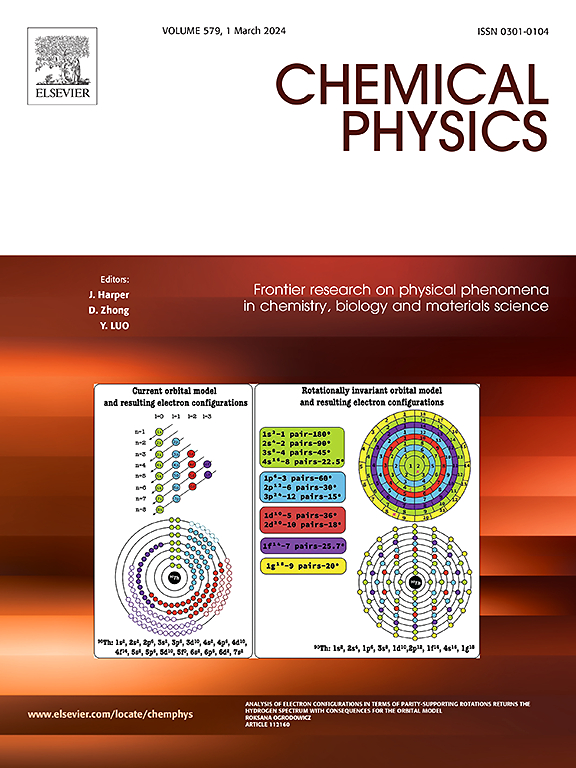Interband multilevel transitions in ZnO/MgZnO asymmetric double quantum wells
IF 2.4
3区 化学
Q4 CHEMISTRY, PHYSICAL
引用次数: 0
Abstract
In this paper, we report a theoretical study on electron interband transitions in ZnO/MgZnO asymmetric double quantum wells under external electric and magnetic fields, using the effective mass approximation to calculate eigenenergies and wave functions of electrons, heavy holes, and light holes. The first-order linear and third-order nonlinear optical absorption coefficients and refractive index changes during multilevel transitions are analyzed in detail, revealing that the optical behavior of the system is significantly modulated by both the electric field (orientation and intensity) and magnetic field (magnitude). Specifically, optical parameters associated with the ground state (E1) and first excited state (E2) of electrons exhibit opposite trends under forward/reverse electric fields: positive fields suppress E1 related transitions (e.g., a 99.73% decrease in the absorption from the heavy hole ground state to the electron ground state) but enhance E2 related transitions, while negative fields show the reverse behavior. Heavy hole transitions dominate the optical response due to their more localized wave functions, outperforming light hole transitions in absorption intensity. Under magnetic fields (up to 20T), quantum confinement is enhanced, leading to slight increases (2.38%–8.33%) in optical absorption peaks for E1-related transitions and decreases (28%) for E2-related transitions, though the overall impact is weaker than that of electric fields. These findings provide theoretical insights for optimizing the optoelectronic properties of ZnO-based materials in ultraviolet detectors and optical modulators.

ZnO/MgZnO非对称双量子阱的带间多能级跃迁
本文报道了在外加电场和磁场作用下ZnO/MgZnO非对称双量子阱中电子带间跃迁的理论研究,利用有效质量近似计算了电子、重空穴和轻空穴的本征能和波函数。详细分析了多能级跃迁过程中一阶线性和三阶非线性光学吸收系数和折射率的变化,揭示了系统的光学行为受到电场(取向和强度)和磁场(幅度)的显著调制。具体而言,与电子基态(E1)和第一激发态(E2)相关的光学参数在正向/反向电场作用下表现出相反的趋势:正电场抑制E1相关的跃迁(例如,从重空穴基态到电子基态的吸收减少99.73%),但增强E2相关的跃迁,而负电场则表现出相反的行为。重空穴跃迁由于其更局部化的波函数而主导了光响应,在吸收强度上优于光空穴跃迁。在磁场(高达20T)下,量子约束增强,导致e1相关跃迁的光吸收峰略有增加(2.38%-8.33%),e2相关跃迁的光吸收峰减少(~ 28%),但总体影响弱于电场。这些发现为优化zno基材料在紫外探测器和光调制器中的光电性能提供了理论见解。
本文章由计算机程序翻译,如有差异,请以英文原文为准。
求助全文
约1分钟内获得全文
求助全文
来源期刊

Chemical Physics
化学-物理:原子、分子和化学物理
CiteScore
4.60
自引率
4.30%
发文量
278
审稿时长
39 days
期刊介绍:
Chemical Physics publishes experimental and theoretical papers on all aspects of chemical physics. In this journal, experiments are related to theory, and in turn theoretical papers are related to present or future experiments. Subjects covered include: spectroscopy and molecular structure, interacting systems, relaxation phenomena, biological systems, materials, fundamental problems in molecular reactivity, molecular quantum theory and statistical mechanics. Computational chemistry studies of routine character are not appropriate for this journal.
 求助内容:
求助内容: 应助结果提醒方式:
应助结果提醒方式:


